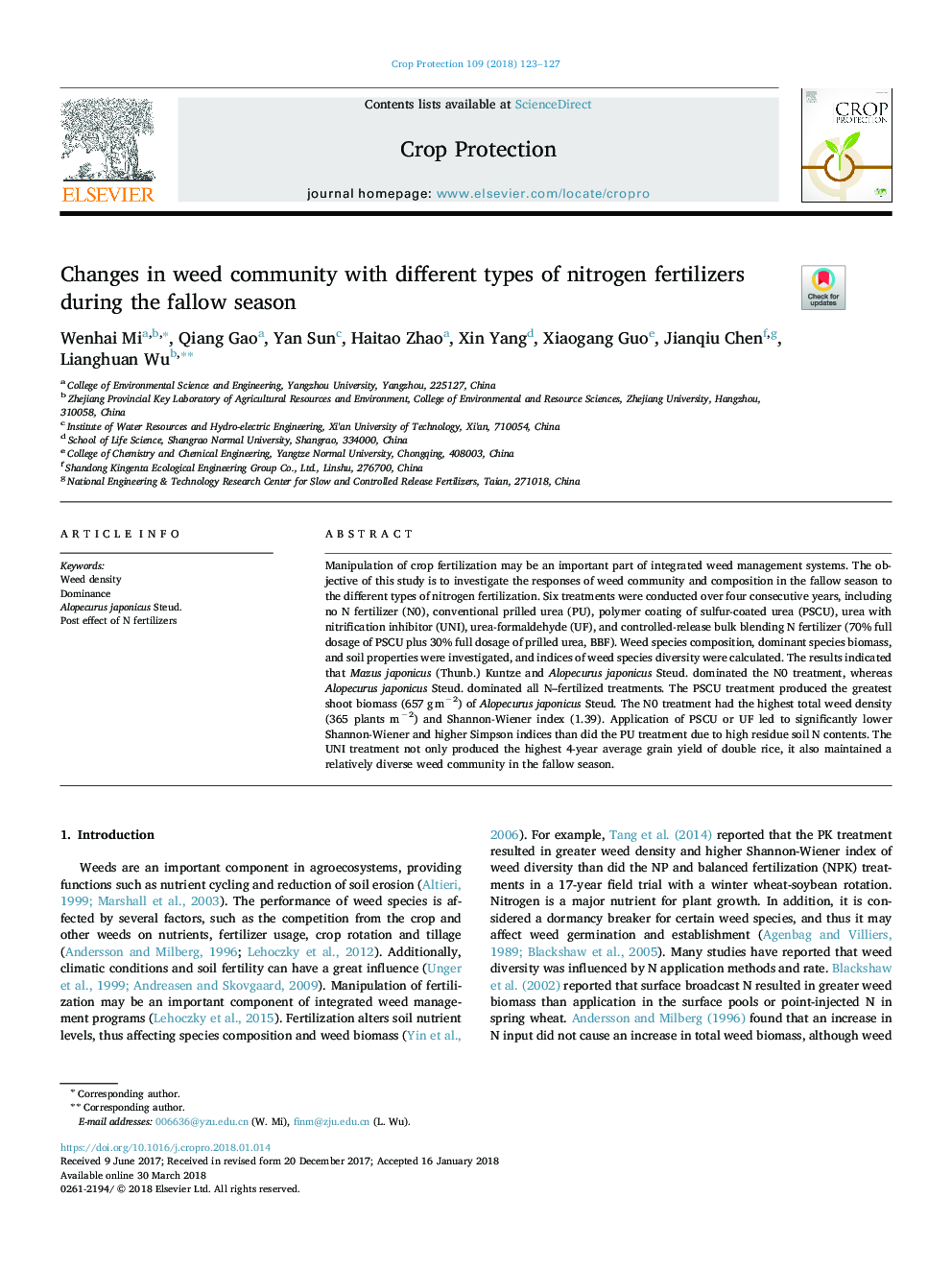| کد مقاله | کد نشریه | سال انتشار | مقاله انگلیسی | نسخه تمام متن |
|---|---|---|---|---|
| 8878152 | 1624278 | 2018 | 5 صفحه PDF | دانلود رایگان |
عنوان انگلیسی مقاله ISI
Changes in weed community with different types of nitrogen fertilizers during the fallow season
ترجمه فارسی عنوان
تغییرات در جامعه علف های هرز با انواع مختلف کود نیتروژن در فصل
دانلود مقاله + سفارش ترجمه
دانلود مقاله ISI انگلیسی
رایگان برای ایرانیان
کلمات کلیدی
موضوعات مرتبط
علوم زیستی و بیوفناوری
علوم کشاورزی و بیولوژیک
علوم زراعت و اصلاح نباتات
چکیده انگلیسی
Manipulation of crop fertilization may be an important part of integrated weed management systems. The objective of this study is to investigate the responses of weed community and composition in the fallow season to the different types of nitrogen fertilization. Six treatments were conducted over four consecutive years, including no N fertilizer (N0), conventional prilled urea (PU), polymer coating of sulfur-coated urea (PSCU), urea with nitrification inhibitor (UNI), urea-formaldehyde (UF), and controlled-release bulk blending N fertilizer (70% full dosage of PSCU plus 30% full dosage of prilled urea, BBF). Weed species composition, dominant species biomass, and soil properties were investigated, and indices of weed species diversity were calculated. The results indicated that Mazus japonicus (Thunb.) Kuntze and Alopecurus japonicus Steud. dominated the N0 treatment, whereas Alopecurus japonicus Steud. dominated all N-fertilized treatments. The PSCU treatment produced the greatest shoot biomass (657â¯gâ¯mâ2) of Alopecurus japonicus Steud. The N0 treatment had the highest total weed density (365 plants mâ2) and Shannon-Wiener index (1.39). Application of PSCU or UF led to significantly lower Shannon-Wiener and higher Simpson indices than did the PU treatment due to high residue soil N contents. The UNI treatment not only produced the highest 4-year average grain yield of double rice, it also maintained a relatively diverse weed community in the fallow season.
ناشر
Database: Elsevier - ScienceDirect (ساینس دایرکت)
Journal: Crop Protection - Volume 109, July 2018, Pages 123-127
Journal: Crop Protection - Volume 109, July 2018, Pages 123-127
نویسندگان
Wenhai Mi, Qiang Gao, Yan Sun, Haitao Zhao, Xin Yang, Xiaogang Guo, Jianqiu Chen, Lianghuan Wu,
